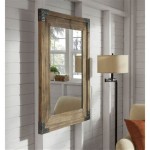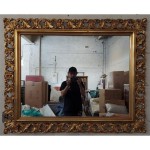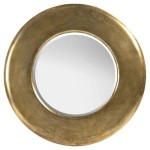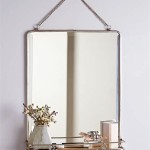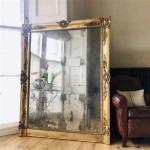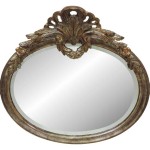How to Remove a Bathroom Mirror Secured with Clips
Removing a bathroom mirror held in place with clips requires careful execution to prevent damage to the mirror, wall, and surrounding surfaces. This process involves understanding the type of clips used and employing the appropriate tools and techniques. Preparation is key to a successful and safe removal.
Necessary Tools and Materials
Gathering the correct tools and materials beforehand streamlines the removal process. Having everything readily available minimizes interruptions and potential mishaps.
- Protective Gloves
- Safety Glasses
- Drop Cloth or Old Blanket
- Putty Knife or Thin Pry Bar
- Screwdriver (Phillips or Flathead, depending on clip type)
- Masking Tape
- Suction Cups (Optional)
- Assistant (Recommended for larger mirrors)
Preparing the Work Area
Protecting the bathroom surfaces and creating a safe working environment are crucial initial steps. This preparation mitigates the risk of accidental damage and injury.
- Lay down a drop cloth or old blanket to protect the sink, countertop, and flooring from dropped tools or glass shards.
- Apply masking tape to the mirror's surface in a starburst pattern emanating from the center. This helps contain the glass should it crack during removal.
- Put on protective gloves and safety glasses to safeguard against potential cuts.
Identifying the Clip Types
Understanding the type of clips securing the mirror informs the removal method. Different clip designs require specific approaches for detachment.
- J-Clips: These clips have a J-shaped hook that grips the edge of the mirror. They are often secured to the wall with screws.
- L-Clips: Similar to J-clips, L-clips have an L-shaped design and are also typically screwed into the wall.
- Spring Clips: These clips utilize spring tension to hold the mirror against the wall and may require a different removal technique.
- Hidden Clips: Some mirrors utilize hidden clips behind the mirrored surface, often requiring access from behind the wall.
Removing J-Clips and L-Clips
The removal process for J-clips and L-clips is similar, focusing on loosening the screws that secure them to the wall.
- Locate the screws holding the clips in place. They are usually found on the top and bottom edges of the mirror.
- Carefully loosen and remove the screws using the appropriate screwdriver.
- Once the screws are removed, gently pry the clip away from the mirror using a putty knife or thin pry bar.
- Repeat this process for all the clips securing the mirror.
Removing Spring Clips
Spring clips require a different approach due to their tension-based mechanism. Care must be taken to avoid sudden releases that could damage the mirror.
- Identify the mechanism of the spring clip. Some have a small release lever or tab.
- If a release mechanism is present, carefully depress or manipulate it to release the clip's grip on the mirror.
- If no release mechanism is present, gently pry the clip away from the mirror using a putty knife or thin pry bar, applying even pressure to avoid breakage.
Removing Mirrors with Hidden Clips
Mirrors with hidden clips often present a more complex challenge. Accessing these clips may require working from behind the wall.
- If possible, access the back of the wall where the mirror is mounted. This may involve accessing the adjacent room or through a cabinet.
- Locate the hidden clips and carefully detach them from the mirror. The exact method will depend on the clip design.
- If accessing the back of the wall is not feasible, consult a professional for removal.
Detaching the Mirror from the Wall
Once all the clips are removed, the mirror can be carefully detached from the wall. Employing proper lifting techniques prevents accidental dropping and breakage.
- If possible, have an assistant help with larger mirrors. This ensures even support and reduces the risk of dropping.
- Using suction cups can provide additional grip and control during the removal process.
- Slowly and evenly pull the mirror away from the wall, ensuring it remains level to prevent cracking.
- Once detached, carefully set the mirror down on a protected surface.
Handling Mirror Disposal
Proper disposal of the old mirror prevents injury and ensures environmental responsibility.
- Wrap the mirror in a thick blanket or cardboard and secure it with tape. Clearly label it as "broken glass" or "mirror."
- Check local regulations for proper mirror disposal guidelines. Some municipalities have specific requirements for discarding large glass items.
- Consider donating the mirror if it's still in good condition. Some organizations or individuals may be able to repurpose it.

2 Step Guide How To Remove A Bathroom Mirror With Clips

How To Remove A Bathroom Mirror Lowe S

How To Remove A Frameless Mirror Like Nervous Grandma

Taking Down A Bathroom Mirror

How To Safely And Easily Remove A Large Bathroom Builder Mirror From The Wall Site Title

How To Remove A Glass Bathroom Mirror Safely

How To Safely And Easily Remove A Large Bathroom Builder Mirror From The Wall Site Title

How To Safely And Easily Remove A Large Bathroom Builder Mirror From The Wall Site Title

How To Safely And Easily Remove A Large Bathroom Builder Mirror From The Wall Site Title

How To Remove A Bathroom Mirror Lowe S

